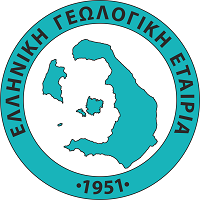Η περιοχή μεταξύ των ορέων Αιγάλεω και Πάρνηθας αποτελεί ένα σύνθετο τεκτονικό βύθισμα, πληρωμένο με διάφορες φάσεις μεταλπικών ιζημάτων, που χαρακτηρίζεται από μια σύνθετη τεκτονική δομή και εξέλιξη από το Μειόκαινο μέχρι σήμερα. Στο εσωτερικό του βυθίσματος αναπτύσσονται μια σειρά από δεύτερης τάξης ρήγματα και ρηξιγενείς ζώνες, που έχουν δραστηριοποιηθεί σε διαφορετικές περιόδους κατά τη νεοτεκτονική περίοδο και τεμαχίζουν την περιοχή σε επιμέρους τάφρους και κέρατα. Οι διευθύνσεις των ρηγμάτων αυτών είναι κυρίως Α-Δ και ΒΒΔ-ΝΝΑ, αντίστοιχες δηλαδή με τις διευθύνσεις των μεγάλων περιθωριακών ρηγμάτων των μεγάλων τεκτονικών κεράτων της Πάρνηθας και του Αιγάλεω. Τόσο η σύνθετη τεκτονική δομή, όσο οι λιθολογικές φάσεις φαίνεται ότι διεδραμάτισαν σημαντικό ρόλο στην κατανομή των καταστροφών των σεισμών της 7ης Σεπτεμβρίου 1999.
(EL)
The September 7,1999 earthquake sequence hit the northwestern part of the basin of Athens (area between Aigaleo and Parnis Mt.), causing a large number of deaths and injuries, as well as extensive damage to structures. The major area represents a small basin which is covered by thick post-alpine formations, which are extended talus cones and, to a lesser extent, neogene lacustrine and fluvial deposits. The latter have been blanketed by the talus and the alluvial deposits at the north of the area. The basin is flanked by a hill range, where the non-metamorphic alpine carbonates of the "Sub-Pelagonian" Unit and an allocthonous tectonic melange that belongs to the "Athenian nappe" outcrop. The talus cones, with a thickness that ranges from a few m. to 100 m., contain frequent lateral transitions alternations of cohesive or semi-cohesive scree and loose deposits -sand, pebbles, gravel, clay, etc. The alluvial deposits consist of clay, red soils and conglomerates is clay matrix and have a thickness between a few m. and 20-30 m. The rieogene deposits comprise relatively compacted phacies of marls, marly limestones, clays and conglomerates. The alpine formations of both the autochton and the allocthon consist largely of carbonate rocks (limestones and marbles) and, to a lesser extend, of clastic deposits (sandstones, shales, schists, and graywackes). The main tectonic feature in the area is the contact between the two alpine units, located at the eastern margin. Besides this tectonic discontinuity, numerous other faults were located, either at the basin flanks, or within the postalpine formations. All these faults determined by a large number of boreholes. They are neotectonic structures that belong to two sets, one with NNW-SSE strike and 60°-80° WSWward or ESE-ward dips, and a second one with ESE-WNW strike and 60°-80° northerly or southerly dips. In fact, these faults are directly related to the creation and evolution of the small neogene basin, which is now buried under the talus scree and the alluvial deposits. It is a complex structure, since it incorporates smaller-scale horsts and grabens. The whole picture is in good accordance with the one we get from the greater area. The damage is located within a broad, NNE-SSW trending zone that covers the central and eastern parts of the area. The correlation of this picture with the geological and structural data from the studied area showed that the most serious damage took place on loose foundation formations, which were either the unconsolidated members of the talus cones, or the alluvial deposits. However, this was not the only factor that affected the damage distribution, since the heaviest damage was located (i) along the trace of the tectonic contact between the two alpine units, (ii) at the areas with higher fault density, usually close to the basin margins, but also locally within the basin. These faults were not reactivated in the September earthquake, but "channeled" the seismic energy into specific zones, which also holds, at a larger scale, for the greater meizoseismal area. Hanging wall effects, effects of sedimentary basins, basin edge effects and focusing effects are also probably to have played a significant part, at the locations where the fault geometry and the basin structure performed as reflectors, magnifying the effects of shaking and thus maximizing the strong ground motion values. Besides, the fact that the heaviest damage is located at the central and eastern part of the basin, where the fault fabric is denser and the faults better expressed, is not accidental.
(EN)

